The Best Tactic Theme to Train to Become a Calculation BEAST
How to significantly improve your calculation abilities
Do you enjoy chess? Are you an ambitious adult improver? Become a subscriber to Chess Chatter for free to receive weekly podcast updates, challenging puzzles and insightful articles that will help you improve.
You’re probably wondering which tactic theme the title is referring to.
Forks?
Pins?
Skewers?
No, those are too simple… Maybe you think it’s more complicated:
Checkmate in four moves puzzles?
Intermezzo or quite move puzzles?
Nope (though those are useful to train too!)
I am here today to convince you that training and solving king and pawn endgame puzzles will significantly improve your calculation, even if you find yourself in the opening or middlegame.
“Wait a second… How is that going to help me outside of the endgame?”
Hear me out.
At its core, the process of calculation involves hard work and thinking deeply through positions move-by-move rather than relying on generalizations and principles.
Grandmaster Jacob Aagaard defines calculation as1:
Forcing yourself to look for moves/variations either a) beyond your natural horizon or b) outside of your intuitive spectrum.
Obviously, [this is] subjective. What a GM sees, others will have to grind their way through with gritted teeth (calculation). When you work on your calculation, you will automatically improve your ability to see. You are slowly (very slowly) pushing your horizon away from you.
No other tactic theme relies on deep, far horizon calculation more than pawn endgames. Part of the reason for this is that pawn endgames are one of the most non-forgiving parts of chess. If you miss the best move in a middlegame position and play an “okay” move instead, you are probably not going to lose the game because of it. Even if you miss a tactic that you could have done to your opponent, you are most likely not going to lose the game purely because of the missed tactic. Alternatively, if you execute a tactic and win some material, it doesn’t necessarily mean the win is guaranteed. There’s always some potential for the opponent to fight back if you’re not careful.
On the other hand, if you play a sub-par move in a king and pawn endgame, you could very well lose the game (or draw when you could have won) because of it. Against a strong opponent this becomes even more likely.
King and pawn endgames tend to be pretty black and white (pun intended). If the position is equal (and should end in a draw) then the evaluation will be very close to 0. If the evaluation is a tiny bit off zero then it tends to mean that the variation being evaluated will lead to both sides promoting pawns and having queens with one player having a tiny advantage. However, advantages in king and pawn endgames are usually not +1 or -1, they tend to be much larger than that:
If you mess up in a king and pawn endgame and your opponent capitalizes on it, they can win the game on the spot with no counterplay possible from you (assuming they don’t blunder later). Conversely, if you navigate a king and pawn endgame well, it can feel like a guaranteed win if you have the advantage in the first place.
Okay, so king and pawn endgames are unforgiving. But why does that mean they’re good for calculation?
One of the biggest factors for this is that, due to the unforgiving nature of the positions, you MUST work through and calculate the best way to play in each position. There are definitely principles and concepts that can assist your calculation in king and pawn endgames (zugzwang, opposition, outside passed pawns, the “rule of the square”, etc.) which I’m not going to get in-depth with here. But at it’s core, it is calculation that you must rely on.
Another reason that training calculation in king and pawn endgames is good is because there are usually very few moves that need to be considered and calculated in the first place. Many king and pawn endgame positions will only have a couple of reasonable moves available. With the lower number of move options available, it tends to mean that deeper calculation is “easier” to do but also more difficult at the same time. What do I mean by that?
Let’s say you’re in a middlegame position and sense that a tactic might be possible.
In most situations this tactic will last about 3 moves or less. This length of calculation is usually not incredibly difficult unless it involves very tricky candidate moves. You execute the tactic, win the material and then work towards consolidating your material advantage as the game goes on (assuming that the tactic isn’t a mating attack and you don’t deliver checkmate to end the game right away).
On the other hand, if you find yourself in a king and pawn endgame (especially if there is one best move in the position or one important sequence of moves that you need to play) then these calculations can last a lot longer than 3 moves. You can usually calculate much further through the sequences because of the reduced amount of moves available and the unforgiving nature of the position. Many times you will need to calculate pawn races when both sides are pushing a pawn towards promotion.
Do you promote first before your opponent does?
Do you promote and queen with a check on the opponent’s king?
Can you promote first then skewer the opponent’s king and queen?
Maybe even deliver checkmate after you promote?
These are just a few examples of sequences that you can calculate with practice even if they last a lot of moves.
Let’s see an example:
See if you can figure out the best way to play from here (answer below).
The best way to play is 1. b6 Kc6 (if 1…e3 2. b7 exd2 3. b8=Q d1=Q 4. Qb5#! White promotes first and can deliver checkmate after Black promotes) 2. Ka6 e3 3. b7! (not trading pawns on e3 since the d4-pawn will be important to leave on the board) 3…exd2 4. b8=Q d1=Q 5. Qb7+ Kc5 6. Qb5#.
The sequence above was six moves long but none of the moves are terribly difficult to think of. It’s just about looking at and calculating all the available options for both yourself and your opponent, especially when there’s not many options to consider in the first place. Notice that in the starting position White only has 4 legal moves and we can probably rule out 1. d3 pretty quickly.
The final thing that I think is important about calculating king and pawn endgames compared to calculating regular tactics is that it’s usually more costly to guess. In many tactic puzzles you might be be able to guess that the only check available in the position is probably the correct starting move. You play the check and tell yourself you’ll figure out the follow-up after you’ve already got the check on the board. However, in king and pawn endgame calculation puzzles there might be two or three different moves that look very similar. However, only one of them will be correct! This is where the calculation comes into play and you will have to work out why one of the move options is correct and the other reasonable looking moves are not good.
Another example:
You might come up with the idea that the best way of playing is to move our king towards the c-pawn and try to win it.
With that in mind, do you play 1. Ke4 or 1. Ke3?
This is not something you should guess on. If this is in a tactic/calculation puzzle, then only one of the two moves is good to play and there is something wrong with the other one. A really good thing to do in a position like this is to not only work out which move is correct but also be able to explain to yourself why the other move is incorrect!
Answer: 1. Ke3! is correct since 1. Ke4? allows 1…f5+! 2. gxf5+ Kf6 and Black will be able to eliminate both of white’s kingside pawns and draw. After 1. Ke3 f5 (not a check this time!) 2. g5 White keeps the two kingside pawns connected and will capture both the c-pawn and f-pawn later).
So let’s summarize the benefits of training and solving king and pawn endgames:
Deepen you calculation abilities (more precise calculation compared to guessing)
Improve visualization (longer calculation requires better visualization)
Increase ability to focus (pawn endgames can be tough and require you to sit with positions for a longer amount of time compared to many middlegame tactics)
Become better at disproving alternative moves that don’t work (calculating breadth over depth)
I want the readers to keep in mind that I’m not recommending you never solve the more common types of tactic themes. However, if you are feeling like you’ve plateaued in your calculation skills or if you are simply wanting to continue improving as rapidly as possible, then I would recommend incorporating king and pawn endgame puzzle solving into your training plan.
Here’s how to access a lot of king and pawn endgame puzzles to work on solving for yourself:
Go to chess.com or lichess.org
Go to “Puzzles” → “Custom Puzzles” → select/checkmark “pawn endgame” in the list (chess.com)
Go to “Puzzles” → “Puzzle Themes” → click on “pawn endgame” in the phases list (lichess.org)
If you feel like your theoretical pawn endgame knowledge is lacking in the first place, then I would recommend going through the first four parts of the book “Silman’s Complete Endgame Course”. This will get you a very solid baseline of pawn (and other piece) endgame understanding which will be fundamental to training pawn endgame calculation. The first four parts of the book cover essential endgames to know up to a 1600 over-the-board rating.
Finally, let me leave you with a few pawn endgame puzzles to practice your calculation. Answers can be found at the bottom of the article. The final puzzle will be a very tricky pawn endgame study. Grandmaster R. B. Ramesh (trainer of super-GM Praggnanandhaa) is also a big advocate of solving endgame studies for calculation improvement!2
I hope you’ve enjoyed this article. See you in the next post!
ANSWERS:
#1: 1. g5+! hxg5 2. fxg5+ Kxg5 3. Ke5 Kg6 4. Kxe6 then go capture the queenside pawns
#2: 1…cxd5 2. exd5 Kf5! 3. Ke3 Ke5 then capture the d5-pawn and win with the passed f-pawn
#3: 1…a5!! 2. bxa5 Kd7 followed by …Kc7-b7-a6 then capturing both a-pawns)
#4: 1…f5! 2. fxe5 Kxe5! 3. exf5 Kxf5 4. Kd5 Kg4 5. Ke6 Kh3 (5…g6 also works) 6. Kf7 g5 (6…g6 also works) 7. Kf6 h6 8. Kg6 Kxh2 9. Kxh6 g4 followed by 10…Kxg3 winning
#5: 1. fxg5! fxg5 2. h5! Kd6 3. Kd4 a6 4. Ke4 Ke6 5. b4 then go the opposite way black’s king moves to win the pawn on the queenside or pawns on the kingside
#6: 1. e4! g6 2. Kd6 a5 3. g5! fxg5 4. e5 g4 5. e6 g3 6. e7+ Ke8 7. Ke6 g2 8. d6 g1=Q 9. d7#





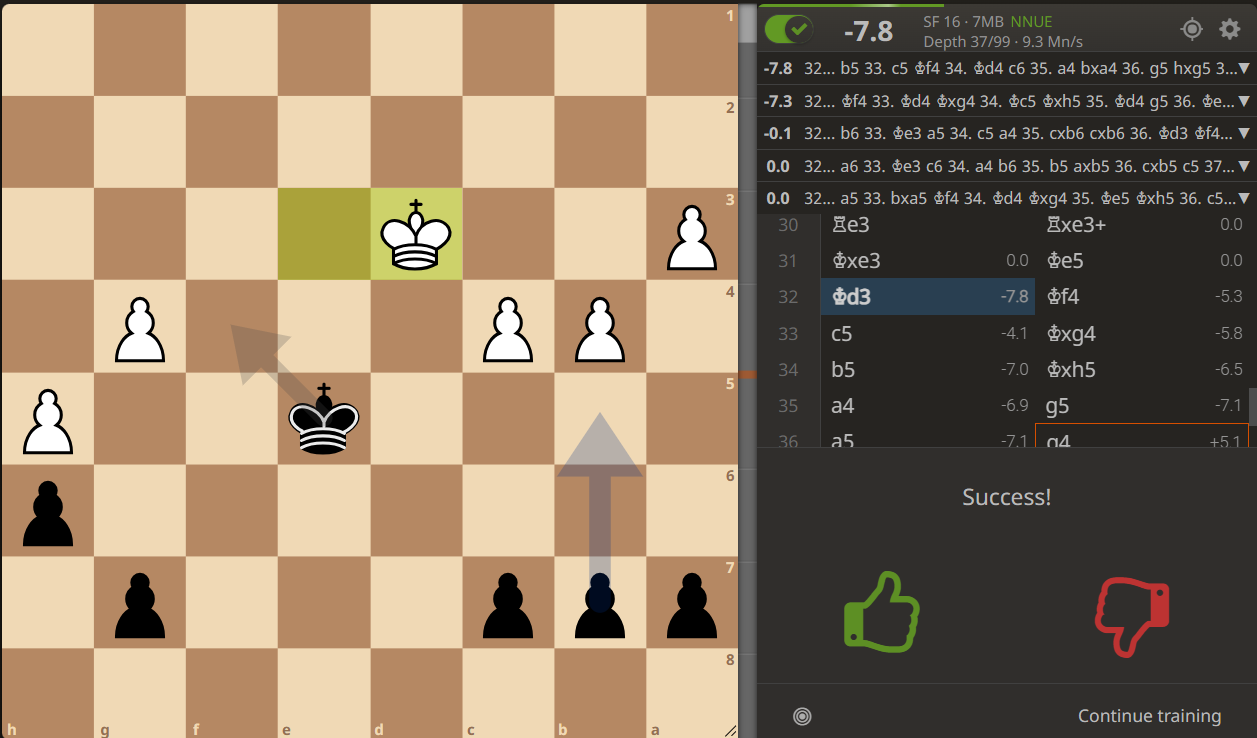
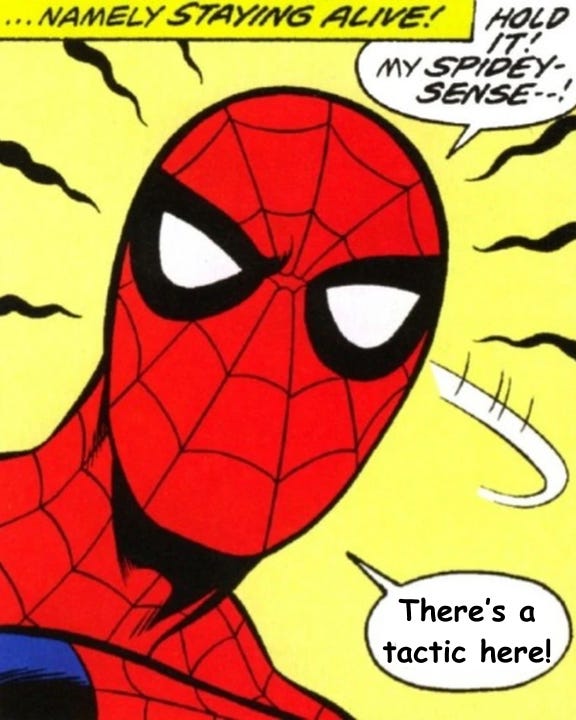
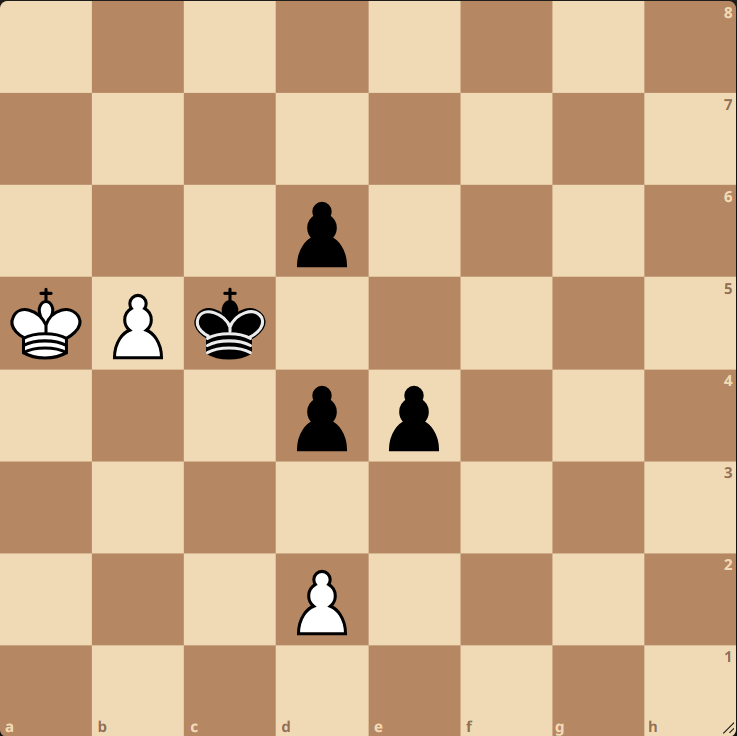
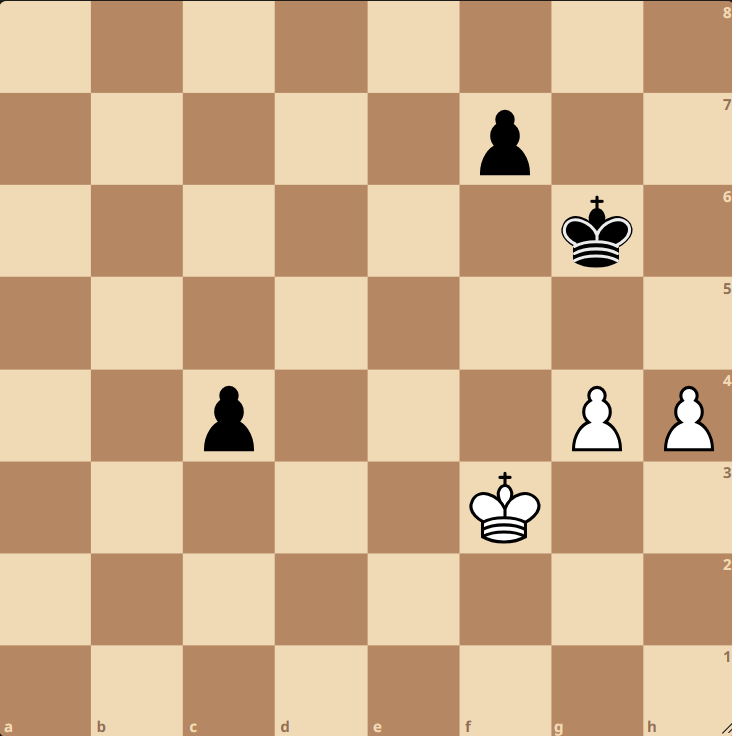
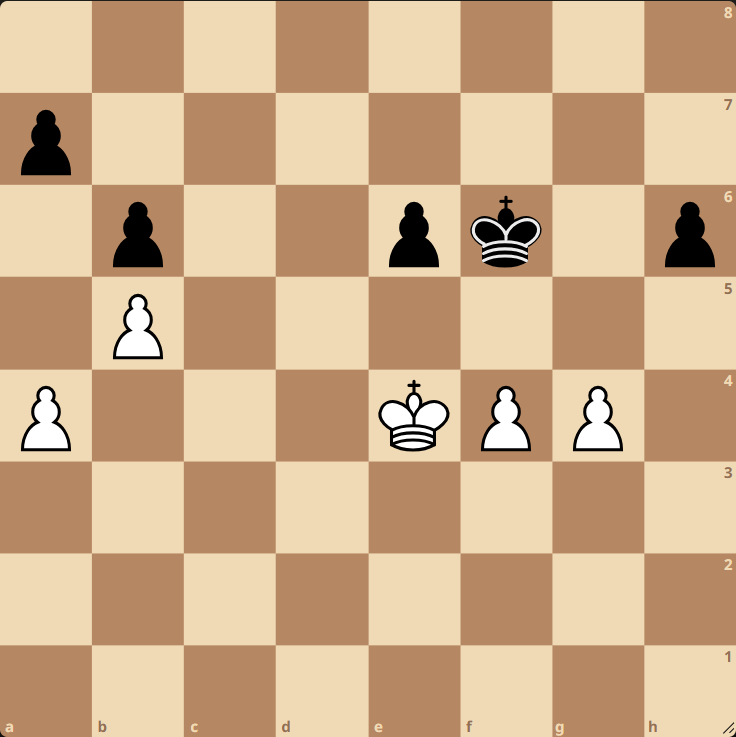
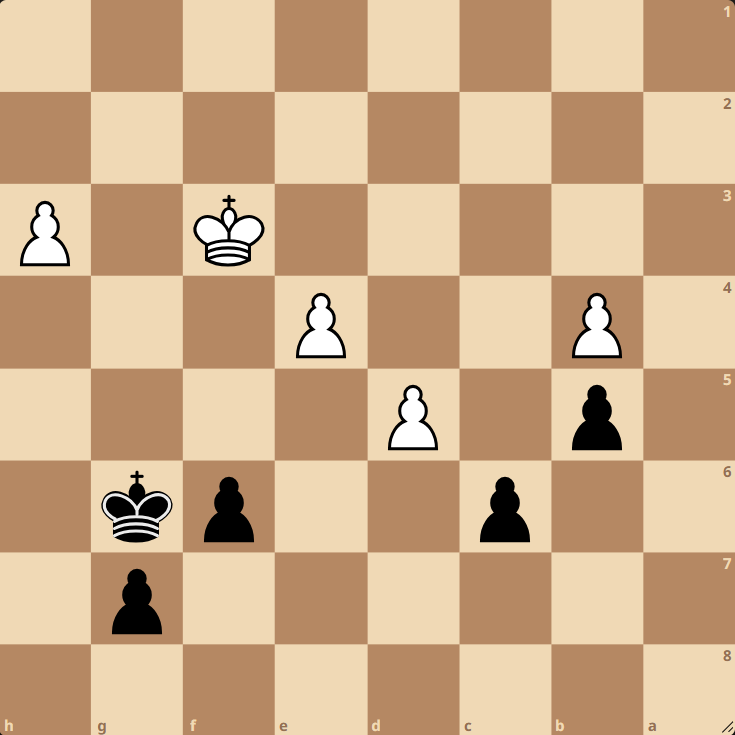
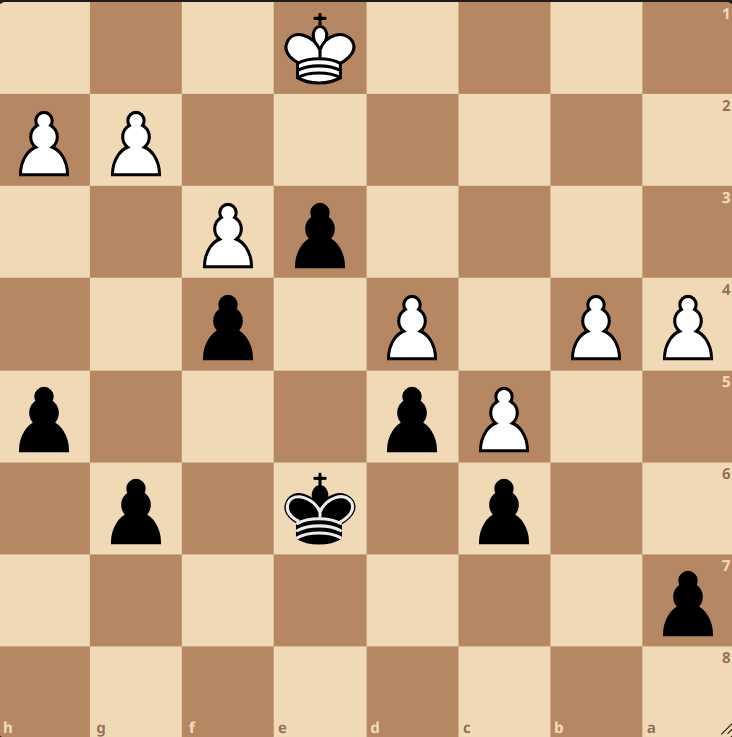
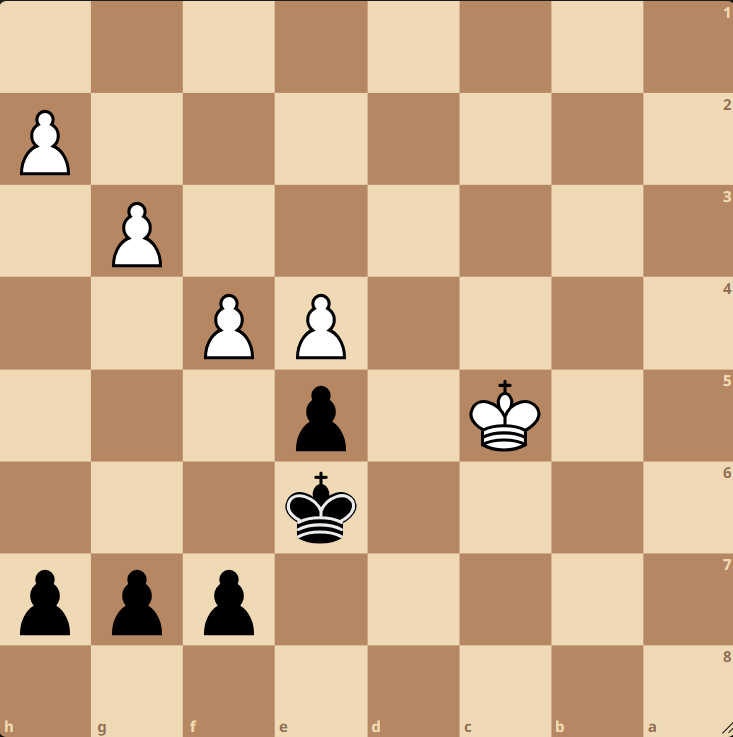
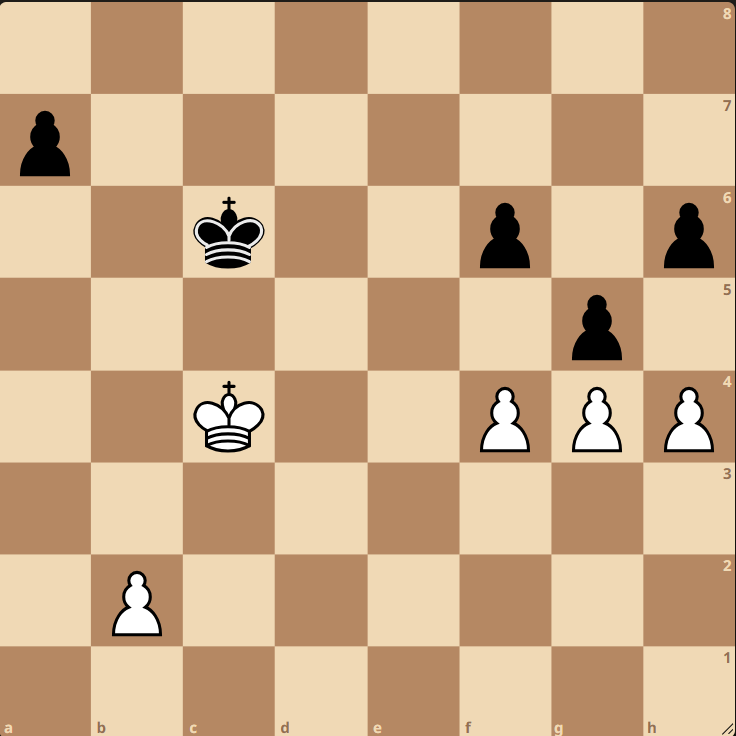
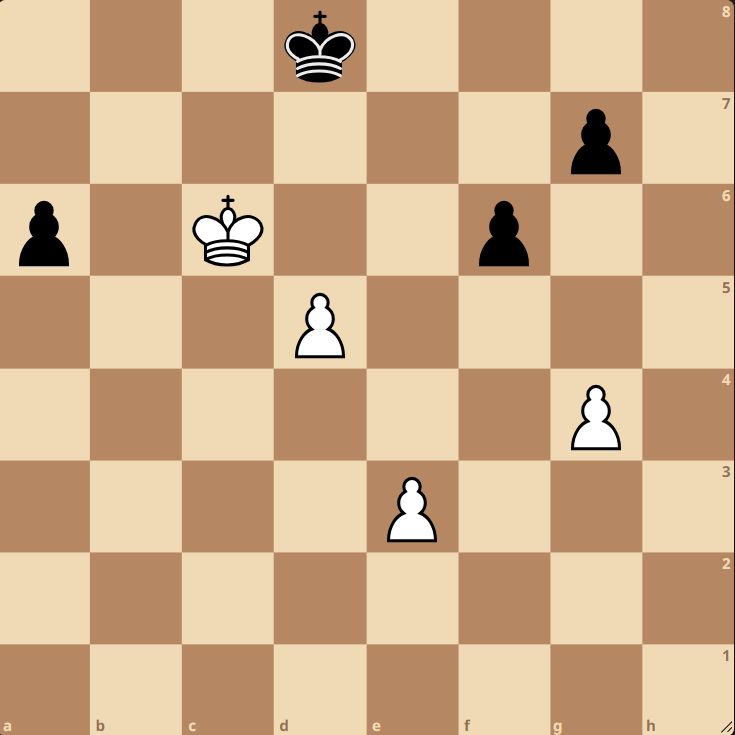
![Table of Contents [Start Here]](https://substackcdn.com/image/fetch/w_140,h_140,c_fill,f_auto,q_auto:good,fl_progressive:steep,g_auto/https%3A%2F%2Fsubstack-post-media.s3.amazonaws.com%2Fpublic%2Fimages%2F69f371ff-f03d-4dd1-b553-6dbf1423b4ac_1024x847.jpeg)
Great post with a lot of helpful material to study. Thanks